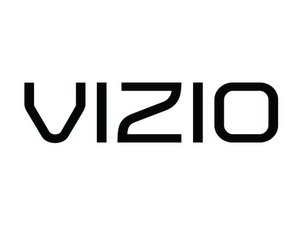Vizio E470i-A0, No power, suspect bad LEDs?
Vizio E470i-A0 with no power.
TV brought in for diagnosis and quote for repair. As usual, I am never confident with my diagnosis on TVs.
TL;DR: Power board throws stable voltages to the main board that I think are all correct. On the LED side it throws less stable voltage and returns ~50% power on LED1 but only ~25% power on LED2.
I think what I have found indicates bad LEDs, but not sure.
When trying to turn on, the TV displays no image. The LED power indicator lights up for a few seconds and then slowly fades to black. Flashlight test does not reveal any image hidden in the black screen. TV makes no noise of any kind from the speakers.
I first suspected faulty power board.


There is 1 fuse and it is not blown. No popped caps or any other failed components on the power board that I can find. AC power comes into the board just fine. On the DC side, there is some stable voltages (Main Board side) and some less stable (LED side).
Testing the power board pinout to main board:

1: 5.1V - Good (5.2V at all times)
2: 5.1V - Good (5.2V at all times)
3: Ground - Good (continuity)
4: Ground - Good (continuity)
5: Ground - Good (continuity)
6: 12V - Good (11.97V when TV "on") 11.97 3.27 3.21 3.06 3.06
7: 12V - Good (11.97V when TV "on")
8: PS On/Off - Good? (3.27V when TV "on")
9: Blu On/Off - Good? (3.21V when TV "on")
10: PWM1 - Good? (3.06V when TV "on", 1.01V when TV "off")
11: PWM2 - Good? (3.06V when TV "on", 1.01V when TV "off")
12: N.C. - Good (no contact)
Testing the power board pinout to the LEDs:

1: LED1 - Bad? (~60V-70V, unstable/fluctuating, when TV "on")
2: N.C. - Good (no contact)
3: VOut1 - Bad? (~120V-130V, unstable/fluctuating, when TV "on")
4: N.C. - Good (no contact)
5: LED2 - Bad? (~30V-40V, unstable/fluctuating, when TV "on")
6: N.C. - Good (no contact)
7: VOut2 - Bad? (~120V-130V, unstable/fluctuating, when TV "on")
(In all cases above, "when TV 'on'" means after plugging it in and after hitting the power button. If "off" is not specifically identified, it is effectively 0V when off.)
On both sides, if I have hit the power button, regardless of the little power indicator LED's current status as lit or not, the power remains. Any time after doing that, the power stays active (stable on the Main Board side, less so on the LED side) until the TV is unplugged. Pressing the power button again doesn't change the power flow. Holding the power button for approximately 6 seconds will reset the power to 0V but it will immediately rise back to the indicated levels above, if the power button is hit again, not hit again, or continued to be held.
I believe these readings are indicating to me bad/failed/burnt out LEDs, but I am not sure. It seems every time I think I have a TV figured out, the next one is different.
Hoping some of the expert here who know TVs better than me can chime in if I'm on the right track or have gone way off course.
Thank you for your time and any help!
EDIT: My LED tester:

crwdns2934109:0crwdne2934109:0


 22
22  7
7  5
5 